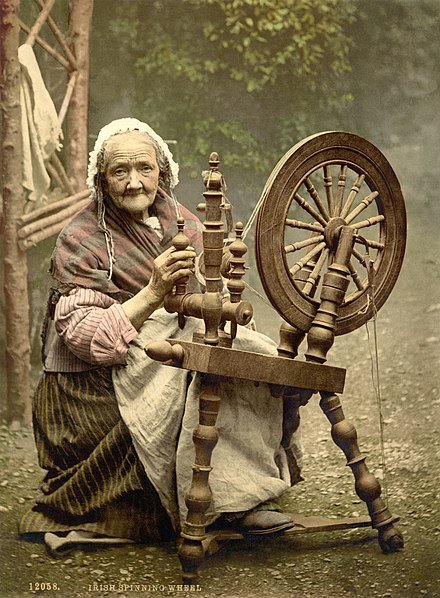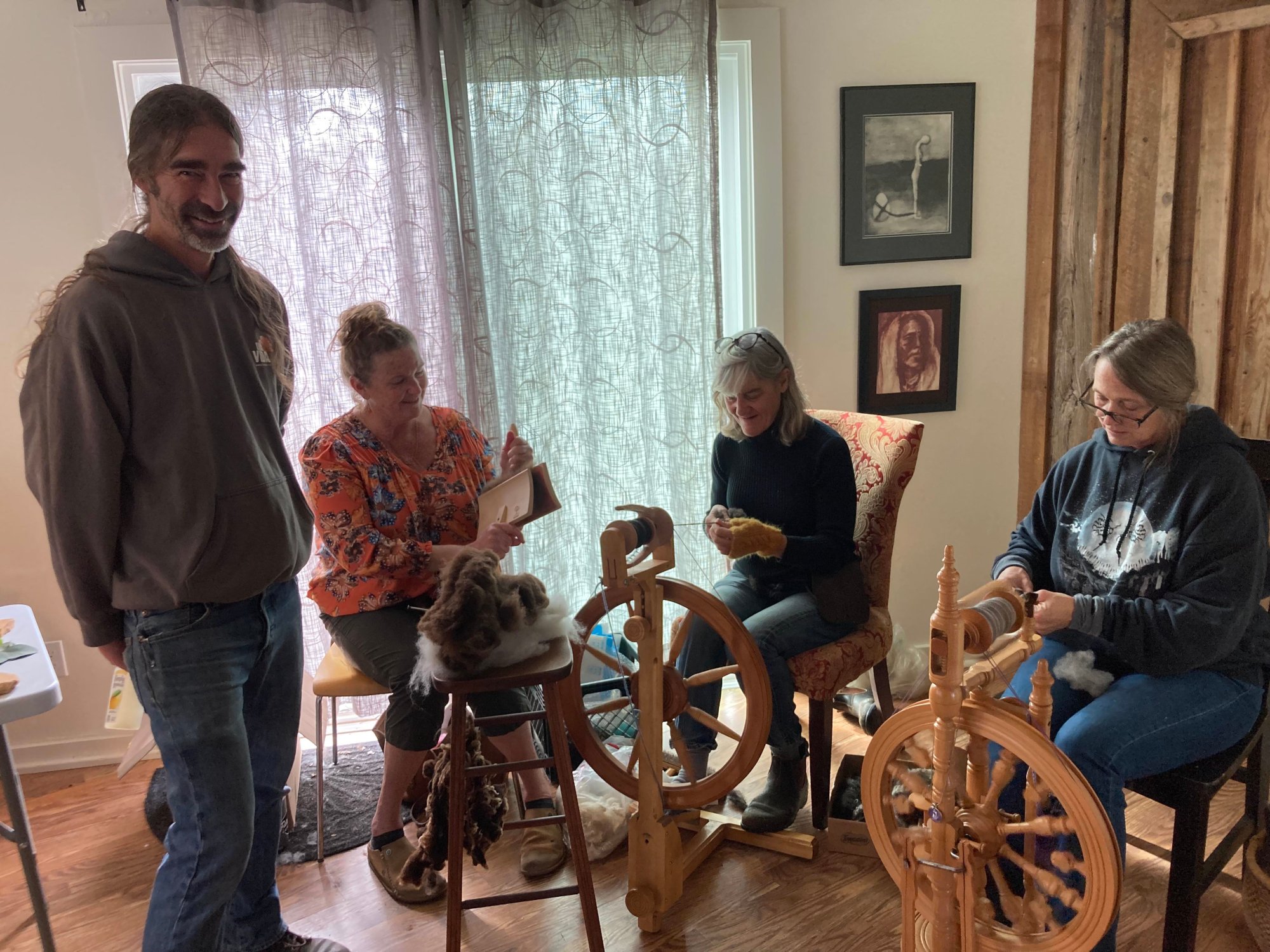Presenting: Deviled Eggery’s Fiber Foragers
Back in the Day: Bah bah, black sheep, have you any wool? Yes sir, yes sir, three bags full.
In the early 1700s, before the invention of spinning and weaving machines, yarn was spun and cloth was made by hand, at home, mainly using wool and flax. Fiber production, like food production, was almost entirely local and sustainable. Clothing and cloth items were highly valued possessions - lovingly tended and mended and passed down through generations. Growing and processing fiber and food was a huge part of daily life, and doing it as a community effort was really the only option.
Despite these enviable community-minded, local sustainability practices, life in this time objectively sucked. A newborn baby had about a 50/50 chance of surviving to the age of five, there was no such thing as human rights, and pooping was an outdoor activity. I sometimes wonder whether the meditative nature of solo wool spinning and scythe mowing and the camaraderie of communal wool spinning was the key to our species' survival.
Now: I'm too sexy for my shirt.
We all know how it is now. Anyone can waltz into Ross or Target and walk out with a whole new mainly-plastic made-in-China wardrobe for less than the price of a decent restaurant meal. This is what they call fast fashion. And fast it is. Truly easy come, easy go.
But where does this cheap clothing go when it doesn't quite fit right or doesn't quite look right, or bursts a seam on day two? Ghana, mainly.
On the upside, smallpox has been eradicated, women and people of color are allowed to vote, and the average human lifespan doubled in the last 100 years.
Enter the Deviled Eggery: I get by with a little help from my friends.
Why not combine the best of now with the best of then? Indoor plumbing, PLUS beautiful, locally sourced, handmade heirlooms, created in an atmosphere of support and friendship? Join a local and online group called the Deviled Eggery Fiber Foragers.
We are keeping it local and fun by encouraging the community to forage in their closets for those heaps and piles of unused yarn, fabric, and fiber tools. We figure there is enough usable raw material lying around out there that no one need buy yarn or fabric for decades, if not centuries.
And while we are busily working through all available local scrap materials, we will be learning to work with our cutest local fiber sources - like sheep, goats, llamas, and alpacas. If we get super ambitious we will eventually throw flax into the mix. Homespun linen anyone?
Join the group and show us your best projects using local fibers and local resources - and by local we mean foraged from the depths of your closet, sheared from your neighbors sheep, or torn off your partner's back so you can repurpose it into something better. You get the (needle)point!




